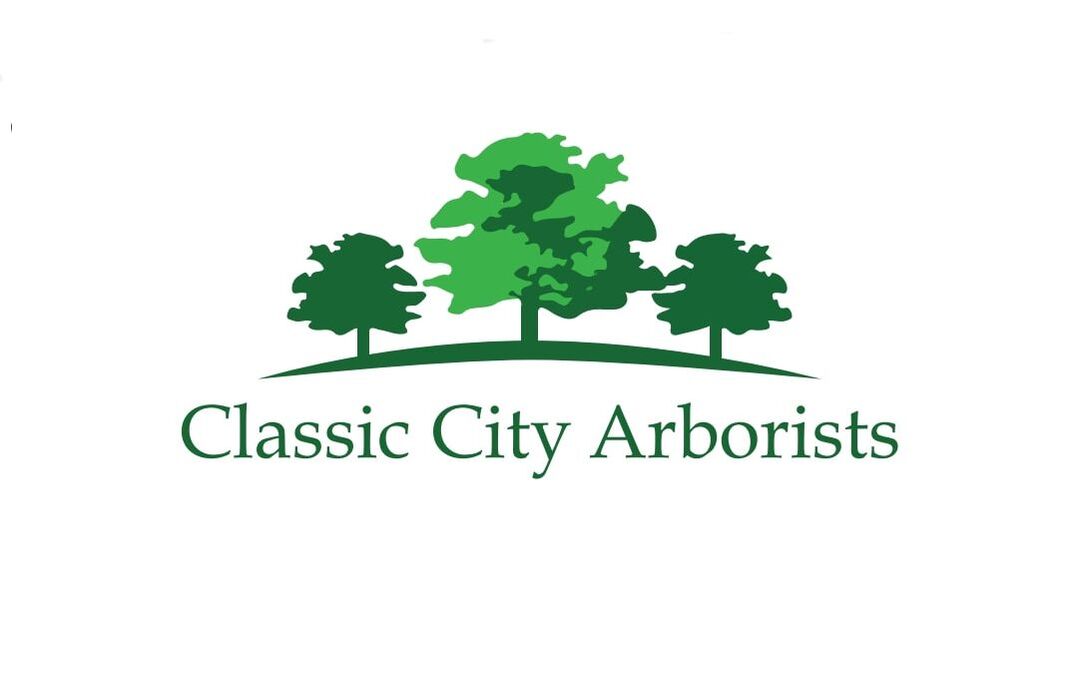|
News and Blog Articles
|
|
Next up on our exploration of the UGA Campus Arboretum is the South Campus tour. An arboretum is just a fancy word for a botanical garden that features mainly trees. Back in 2000, UGA dedicated its entire campus as an arboretum and created the UGA Campus Arboretum foundation. The foundation’s mission is to plant and maintain trees of historic, local, and botanical value across its 762 acres. This week, we’re going through the South Campus tour. Check out our articles on the North Campus tour and Central Campus tour, or visit Campus Arboretum’s website for interactive walk-throughs. Read on to browse through the trees included on the South Campus tour! 1. Douglas Fir – Pseudotsuga menziesiThe Douglas fir is commonly chosen for Christmas trees, and is valued for its soft and light-colored lumber. 2. Eastern Red Cedar – Juniperus virginianNative to the eastern US, these cedar trees grow slowly over hundreds of years. Visit our Tree of the Month article to learn more about the Eastern Red Cedar! 3. Golden Raintree – Koelreuteria paniculataThe vibrant yellow blossoms of this east-Asian native float to the ground when disturbed by the wind, just like golden rain! 4. Dawn Redwood – Metasequoia glyptostroboidesNot to be confused with the coastal redwoods of the Redwood Forest, the dawn redwood is the only surviving species of the Metasequoia genus. 5. Southern Live Oak – Quercus virginianaThese massive, ancient trees are a staple to our southeast coastlines, and are often decorated with dripping Spanish moss. Check out our Tree of the Month article to learn more about Southern Live Oaks! 6. Swamp Chestnut Oak – Quercus michauxiiThe Swamp chestnut oak, like the name suggests, prefers to grow in the wetlands and swamps of the Southeast. 7. Savannah Holly – Ilex x attenuata ‘Savannah’A hybrid between the dahoon and American holly, this cultivar is a hardy grower with fluorescent-red berries. 8. Japanese Snowbell – Styrax japonicusThis small, flowering tree is native to China, Japan, and Korea, and grows petticoat-like white flower clusters. 9. Weeping Yaupon Holly – Ilex vomitoria ‘Pendula’This holly is the only tree native to North America that contains caffeine, and it gets its unique species name from purification ceremonies where it was used in teas, and where many people often vomited. 10. Eastern White Pine – Pinus strobusThe twigs and branches of these hardy trees are flexible to help bear the weight of heavy snowfall without breaking. 11. Hardy Orange – Poncirus trifoliataAnother China and Korea native, this citrus tree grows more like a shrub and bears small, fuzz-covered fruits. 12. Scarlet Oak – Quercus coccineaThe scarlet oak gets its name from its leaves that turn brilliant reds in fall. 13. Foster’s #2 Holly – Ilex x attenuata ‘Foster’s #2’One of E.E. Foster’s five holly cultivars, Foster’s #2 is unique as the female tree does not require male pollination to bear fruit. 14. Lusterleaf Holly – Ilex latifoliaThis broad-leaved Japanese and Chinese native is the largest of all holly species. 15. Siberian Elm – Ulmus pumilaLike the name suggests, this species is native to Siberia, as well as northern China and Turkestan. 16. Hybrid Yellow-Poplar – Liriodendron tulipifera x L. chinenseMost trees can only pollinate trees in their species, or trees that are closely related. But the North American yellow-poplar and the Chinese tulip-tree, despite millions of years separating their populations, will still happily reproduce together when given the chance. The result of this inter-fertilization is the hybrid yellow-poplar. 17. Chinese Chestnut – Castenea mollissimaThis chestnut species is mostly immune to chestnut blight, a rampant pathogen that decimates American Chestnut populations. 18. Japanese Evergreen Oak – Quercus glaucaThe leathery foliage of this evergreen species often has a bronze tint when it first emerges, giving it a unique appearance. 19. Chinese Flame Tree – Koelreuteria bipinnataThis tree offers plenty of attractive color, including large butter-yellow flowers in the summer and rosy-pink fruits. 20. Little Leaf Linden – Tilia cordataA European native, this ornamental tree is beloved for its elegant foliage and dense, low-growing branches. 21. Pyramidal European Hornbeam – Carpinus betulus ‘Fastigiata’With strong and muscular trunks, the hardwood of these hornbeams is widely loved in the lumber industry. 22. Bald Cypress – Taxodium distichumThis deciduous conifer is best known for the knobby “knees” it grows when in marshy wetlands. To learn more about the Bald Cypress, check out our Tree of the Month article! 23. Water Tupelo – Nyssa aquaticaThe name of the water tupelo comes from the way its annual seed crop is mostly dispersed via water. 24. Dahoon Holly – Ilex cassineWith its classic red holly berries and attractive evergreen foliage, this holly is a popular ornamental landscaping choice. 25. Sugarberry – Celtis laevigataThe berries of the sugarberry are orange-red to yellow in color and are beloved by a wide range of bird species. 26. Water Hickory – Carya aquaticaWater hickories prefer water-logged wetlands, and their roots can even purify the water around them! 27. Atlantic White Cedar – Chamaecyparis thyoidesThese slow-growing trees can live up to 1,000 years old, and are incredibly decay-resistant. 28. Weeping Gold White Willow – Salix alba ‘Tristis’First introduced in colonial times, this European native is valued for its gorgeous yellowish-green “weeping” branches. 29. Virginia Pine – Pinus virginianaThis short-lived and slow-growing species is often used in reforestation projects to kick off a nourishing ecosystem in otherwise devastated areas. 30. Japanese Zelkova – Zelkova serrataNative to Japan, Taiwan, and eastern China, this species was introduced to America to boost the native American elm populations that easily succumb to Dutch elm disease. 31. Grancy Greybeard – Chionanthus virginicusThis species is known for its clusters of drooping flowers and dark blue fruits. 32. Kentucky Yellowwood – Cladrastis kentukeaThis species features yellow heartwood and fragrant white blooms, and is one of the rarest forest trees in the eastern US. 33. Tulip Poplar – Liriodendron tulipiferaThese fast-growing trees are often the tallest in the forest, reaching heights nearing 150 feet on average. 34. Longleaf Pine – Pinus palustrisBefore the land was settled, these 100-year-old giants dominated an estimated 90 million acres of land between Virginia to Florida to Texas. 35. Bur Oak – Quercus macrocarpaBur oaks won’t bear their acorns until they reach maturity at around 30 to 35 years old, but will then live for nearly 300 more years! 36. Athena Chinese Elm – Ulmis parvifolia ‘Athena’With spectacular mottled bark, this durable cultivar was developed on UGA’s own campus by Dr. Michael Dirr in the 1980s. 37. Bald Cypress – Taxodium distichumThe tour’s second bald cypress, these swamp-loving trees are known for their wide, buttressed trunks. More about the Bald Cypress can be found here. 38. Sawtooth Oak – Quercus acutissimaThis fast-growing oak is a favorite of wildlife in both its native China, Japan, and Korea as well as North America. 39. Black Tupelo – Nyssa sylvaticaThe black tupelo is a popular source of nectar for bees, and is where the majority of tupelo honey comes from. 40. American Beech – Fagus grandifoliaThis unique species can self-propagate via underground sucker shoots. 41. American Hornbeam – Carpinus carolinianaA small understory tree, the American hornbeam features a fluted trunk with smooth gray bark. 42. Bigleaf Magnolia – Magnolia macrophyllaThe overly-large leaves and flowers of this magnolia species are the largest of any native North American tree. 43. Swamp White Oak – Quercus bicolorDrought-resistant and easily transplanted, these trees are common across central and eastern North America. 44. Shortleaf Pine – Pinus echinataThe shortleaf pine is exactly what most people picture when they think of a pine tree, and is widely distributed throughout the eastern United States. 45. Chinese Fringe Tree – Chionanthus retususWith snowy-white flowers that produce a gentle fragrance, the Chinese Fringe tree is a popular ornamental choice. 46. Trident Maple – Acer buergerianumThis species is a popular street tree in our very own Athens! 47. Persian Parrotia – Parrotia persicaNative to northern Iraq, this ornamental tree was discovered on a mountaineering expedition in 1830. 48. Ohio Buckeye – Aesculus glabraThis species naturally grows in heavily-forested areas, and is rarely seen in open areas. 49. American Holly – Ilex opacaWith bright-red berries and spiny leaves, the American holly is a well-known and well-loved tree. 50. Compton Oak – Quercus x comptoniaeA cross between the southern live oak and the overcup oak, this naturally-occurring cultivar is extremely hardy and handsome. 51. Star Magnolia – Magnolia stellataMuch smaller than other magnolias, this species is native to Japan’s Honshu island. 52. Lacebark Pine – Pinus bungeanaWith attractive exfoliating bark and multi-stemmed trunks, these trees are known in China to symbolize longevity. 53. Formosan Sweetgum – Liquidambar formosanaNative to China and Taiwan, every part of this sweetgum is used in a variety of industries. 54. Black Walnut – Juglans nigraPrized for its lumber, the black walnut is logged extensively and coveted for its delicious nuts. Learn more about the Black Walnut in our Tree of the Month article! 55. European Horse Chestnut – Aesculus hippocastanumThis species gets its name from the mistaken belief that its fruits could cure horse cough. 56. Golden Larch – Pseudolarix amabilisDespite the name, this species is not actually a true larch tree! AuthorEmily Casuccio is sister and sister-in-law to Rebekah and Scott Rushing, and has over half a decade of experience in copywriting, copyediting, proofreading, and developmental storyboarding. She's worked with both published and undiscovered authors on both fiction and nonfiction, and takes pride in supporting local businesses. Her passion lies in the written word and helping authors of all capacities realize their dreams and achieve their fullest potential. To learn more about her, read samples of her work, or contact her, visit her online portfolio.
0 Comments
Your comment will be posted after it is approved.
Leave a Reply. |
Categories
All
Archives
January 2023
|
|
23 Whatever you do, work at it with all your heart, as working for the Lord, not for human masters,
24 since you know that you will receive an inheritance from the Lord as a reward. It is the Lord Christ you are serving.
Colossians 3:23-24
24 since you know that you will receive an inheritance from the Lord as a reward. It is the Lord Christ you are serving.
Colossians 3:23-24

